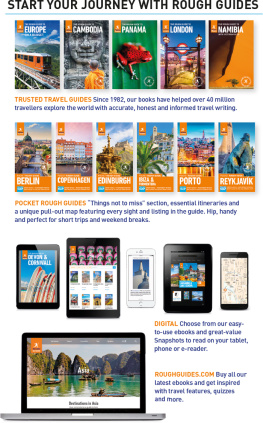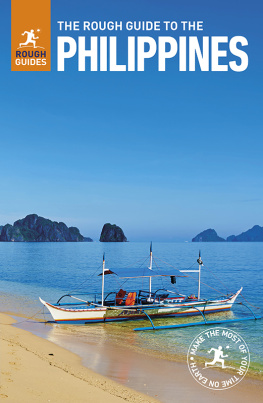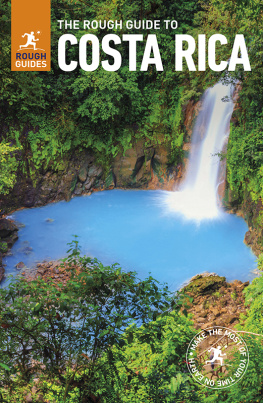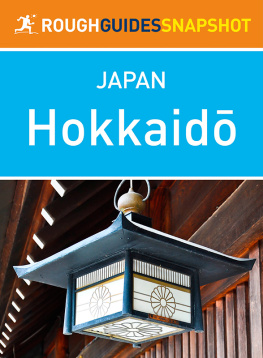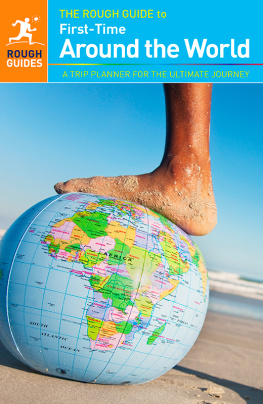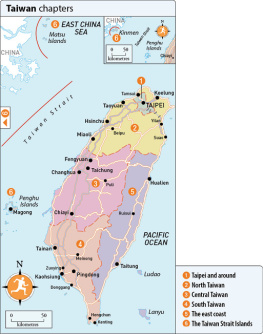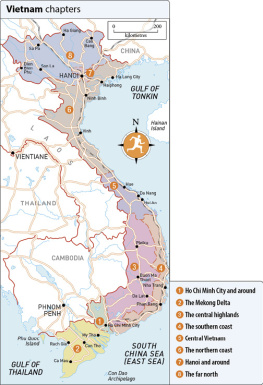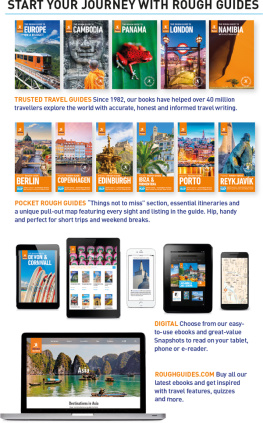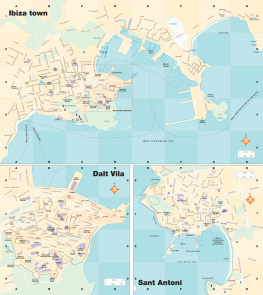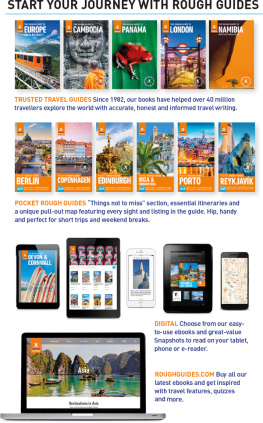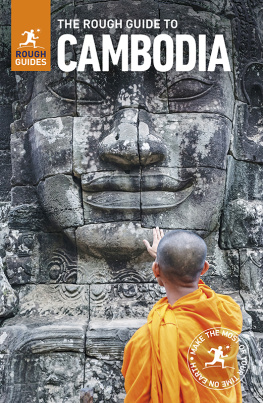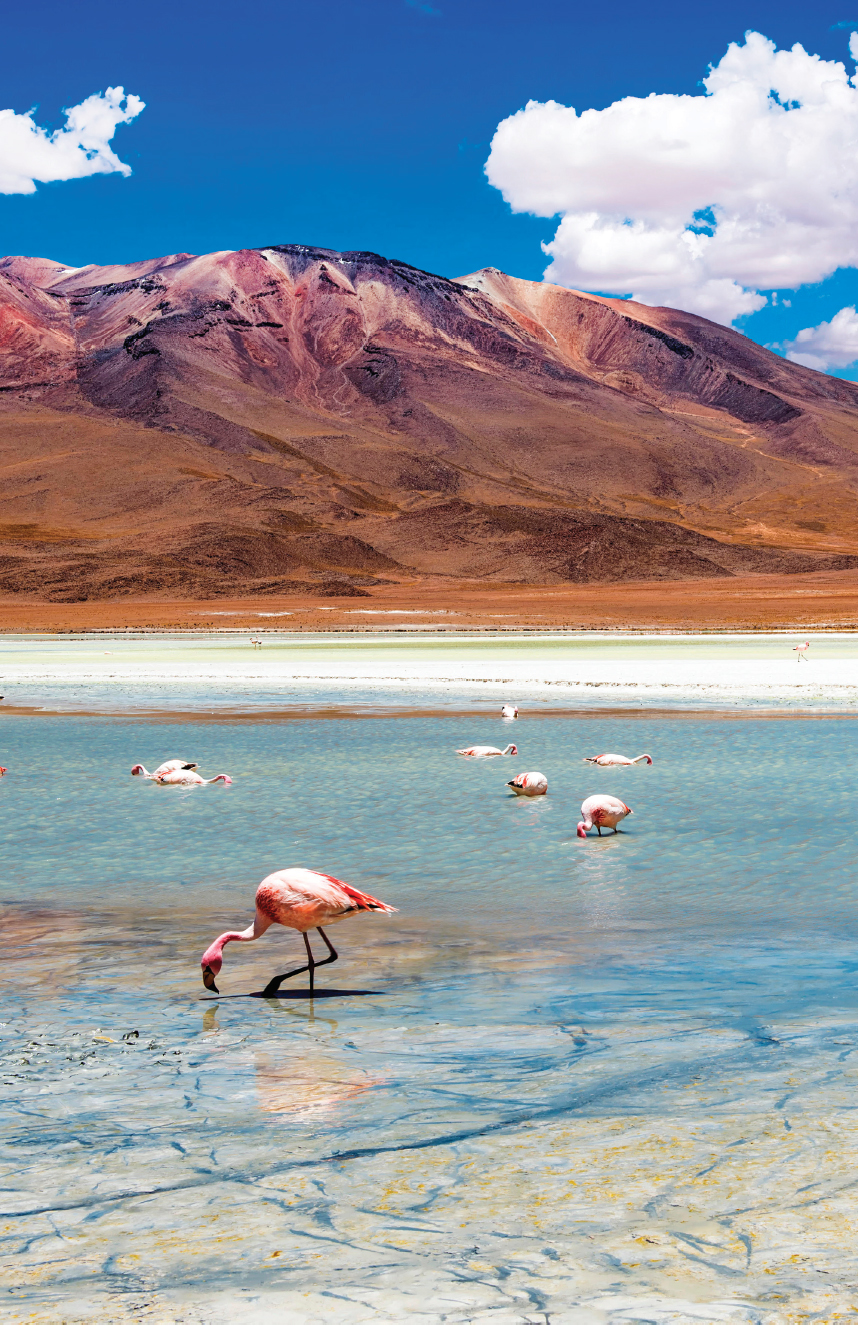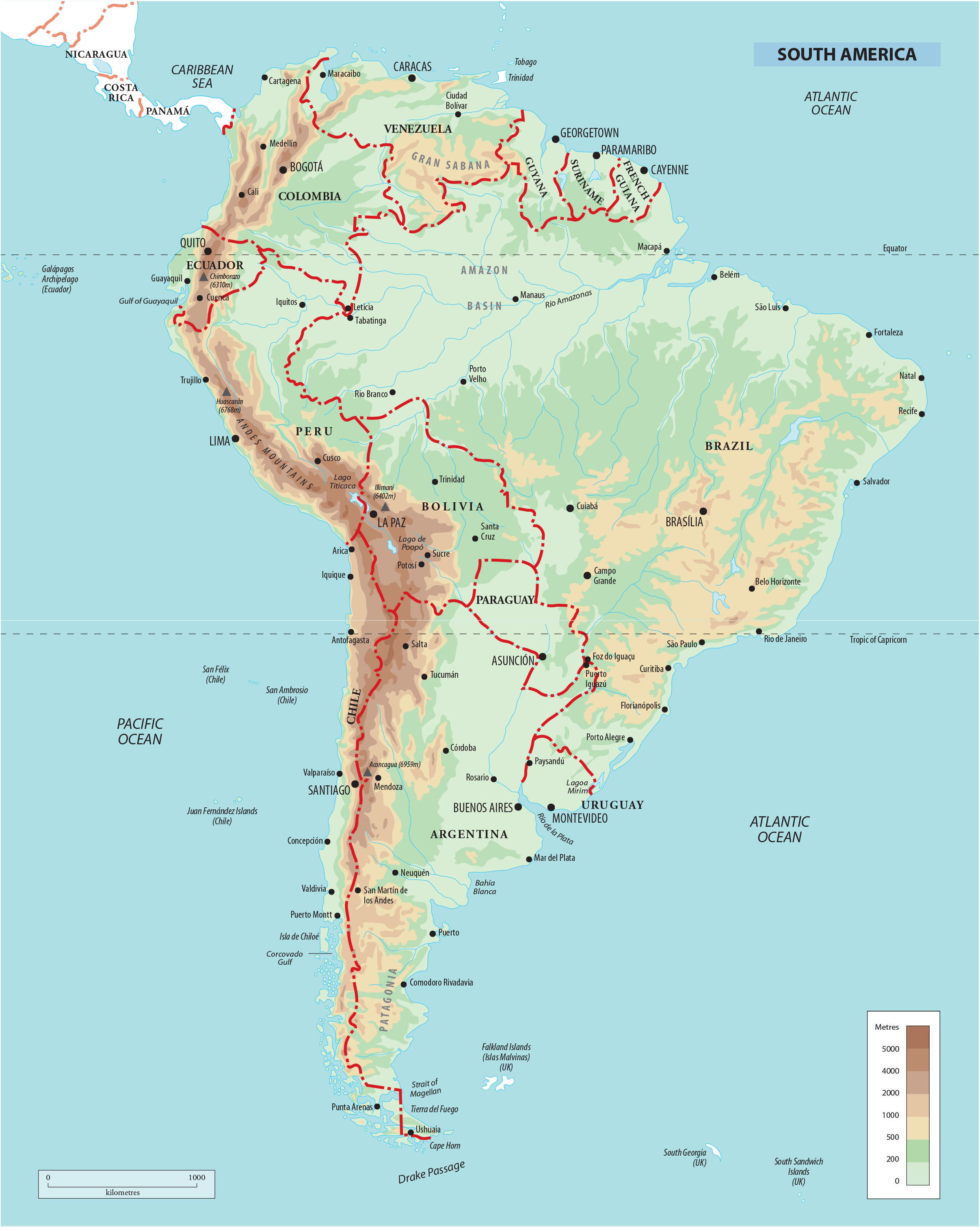
Alamy
Flamingos in the Bolivian Altiplano
Contents
Picfair
Introduction to
South America
From the cloudforests of Ecuador to the pampas of Argentina, South America is a dizzying trove of landscapes, ancient ruins, giant rivers and dynamic, modern cities that have fuelled the imagination of adventurers for centuries. Trace Darwins voyage through the Galpagos, Francisco de Orellanas fantastical journey along the Amazon or Che Guevaras route across the snowcapped peaks of the Andes. Discover Eva Perns Buenos Aires, a truly beautiful, stylish metropolis, or pick up the trail of Bruce Chatwin across the lonely plains and ice-bound fjords of Patagonia. Whether exploring the elegant cities of Gabriel Garca Mrquezs Colombia, soaking up Aymara culture in Bolivia, or just chilling on a white-sand Brazilian beach, options for budget travellers remain extensive and highly alluring.
Much of the continents dynamism is a result of the collision of cultures here over the last five hundred years. South Americas peoples were devastated by European invasion in the sixteenth and seventeenth centuries, not least by the introduction of diseases that killed thousands. Yet indigenous culture never entirely disappeared and is especially strong in Peru, Bolivia and Brazil to this day. Indeed, much of the continents people are proud of their mestizo heritage ; indigenous, Spanish and Portuguese cultures dominate, but West African, British, Italian, German, French and Dutch influences have also contributed over the years, supplemented more recently by waves of Japanese, Chinese and Middle Eastern settlers. As the Argentine saying goes, Peruvians come from the Incas; Argentines come from the boats.
This blending of races and cultures across the continent means that South American nations have a lot in common. Catholicism has provided a foundation for spiritual life here for centuries sometimes blurring with far more ancient indigenous beliefs, especially in the Andes, it has created a legacy of magnificent churches and exuberant fiestas. When it comes to natural wonders the continent is equally blessed, with just about every terrain from deserts and glaciers, to grasslands, rainforests and wetlands and a range of wildlife found nowhere else: rheas, llamas, giant anteaters, jaguars and armadillos among them. The mighty Amazon River connects the Atlantic with the Brazilian jungle and the Peruvian Andes, while the lofty mountain chain itself runs from Colombia and Ecuador in the north, through Peru and Bolivia to the south of Chile and Argentina. This shared cultural and natural heritage is reflected in the ease of crossing borders, with multi-nation itineraries relatively simple to put together, whether traversing the River Plate between Argentina and Uruguay or the Atacama between Chile and Peru.
Today, South America is booming: Portuguese-speaking Brazil, the largest, richest and most populated country in South America, is a global power in the making, while Peru, Chile, Colombia and Argentina are important regional players. Its an exciting time to visit; backpackers will still find an extensive range of accommodation on offer, with plenty of options for the tight budget. South America also sports some of the best camping and hammock-slinging spots in the world, as well as many exhilarating adventure tourism destinations. Travelling within the continent varies wildly from country to country; sometimes it will require a little patience, initiative and navigating of red tape, but the colourful bus journeys, sunrise ferry crossings and people youll meet along the way will be impossible to forget.
South Americas best beaches
1 Brazil: Copacabana and Ipanema, Rio
Its hard to beat the sand, cocktails and glamour at Brazils most famous beaches, where you can sip on fresh coconuts, listen to samba or play volleyball, all in the shadow of one of the most dynamic cities on earth.
2 Brazil: South Atlantic beaches
The longest stretch of tropical beaches in the world? From the gorgeous tropical strands south of Salvador at Morro de So Paolo, a jumping resort of laidback lounges, bars and parties, all the way to Jericoacora, the land of giant dunes, celebrated for wind-and kite-surfing.
3 Colombia: Parque Nacional Tayrona
Colombias Caribbean coast is lined with fine, white-sand beaches all the way to Panama, but some of the best (and least developed) can be found in this pristine national park, a short drive or boat ride from the city of Santa Marta.
4 Ecuador: Playa Los Frailes, Parque Nacional Machalilla
The most enticing of Ecuadors Pacific beaches, a blissfully untouched strand of chalky sand backed by jungle-smothered mountains. Visit during the week and youll probably have it to yourself, especially in the early morning.
5 Peru: Huanchaco
Peru offers a string of relaxed backpacker resorts, from quiet retreats to party places such as Mncora, but the surfer hangout of Huanchaco just about tops the lot with its fine beaches and fishing-village appeal.
6 Uruguay: Cabo Polonio
Cabo Polonio is the place to really escape from civilization (its only accessible by boat, 4WD jeep or a 7km hike over the rolling dunes). The main activities here are lounging in hammocks, strolling the dunes and visiting the nearby sea lions.
7 Venezuela: Playa El Agua, Isla de Margarita
Almost as glitzy as Copacabana (but much cheaper), El Agua is a 4km-long strip of golden sands, backed by huge palm trees, restaurants and jumping bars. Venezuelas current troubles seem very far away indeed.
Where to go
Brazil alone could occupy several months of travel, though many pan-continental itineraries also begin or end with Rio de Janeiro , one of South Americas most alluring cities: with the worlds most exuberant carnival, hip nightlife, trend-setting beaches and that mesmerizing skyline, its hard to beat. South of Rio lie the wealthier parts of the country, from the colonial elegance of Paraty , the sprawling business and cultural hub of So Paulo and awe-inspiring Iguau Falls (also accessible from Argentina), to the golden beaches of Florianpolis and backpacker-friendly Ilha do Mel . Heading towards Uruguay, Porto Alegre is the home of belt-busting Brazilian churrasco (barbecue). In Northeast Brazil, the easy-going city of Salvador is one of the most energetic in the country and the home of tropical beaches and Afro-Brazilian culture. The interior of Brazil contains the enchanting colonial heartland of Minas Gerais , the unfairly maligned Modernist capital of Braslia and ultimately the Amazonian Basin , an unimaginably vast region of rivers and rainforest, rich in wildlife, best accessed from Belm or Manaus. Its possible to travel by boat from the mouth of the Amazon all the way to Peru, a spellbinding adventure.
Trips to Chile and Argentina are easily combined, often beginning with grand old Buenos Aires , Argentinas capital and the ravishing city of Evita, tango, Borges and Boca Juniors. To the west sits Mendoza , centre of Argentinas ever-improving wine regions, while across the pampas to the south lies Patagonia , divided from its Chilean counterpart by the jagged peaks of the Andes. Slicing between the two countries are mind-boggling glaciers and ice-fields, shimmering mountain lakes, volcanoes and activity-based mountain towns, from Bariloche and the trekking centre of El Chaltn in Argentina, to Pucn and Puerto Natales across the Chilean border the latter is the gateway to the jaw-dropping Parque Nacional Torres del Paine . These days Tierra del Fuego is more a land of penguins, sea lions and flamingos than a land of fire, and is also split between the two countries, with isolated Ushuaia in Argentina the worlds southernmost city. North of Chiles capital, Santiago , and the elegantly faded port city of Valparaso , the Atacama Desert provides a dramatic, witheringly beautiful contrast. The sandy beaches of Arica in northern Chile make a pleasant stop en route to Peru or Bolivia.

